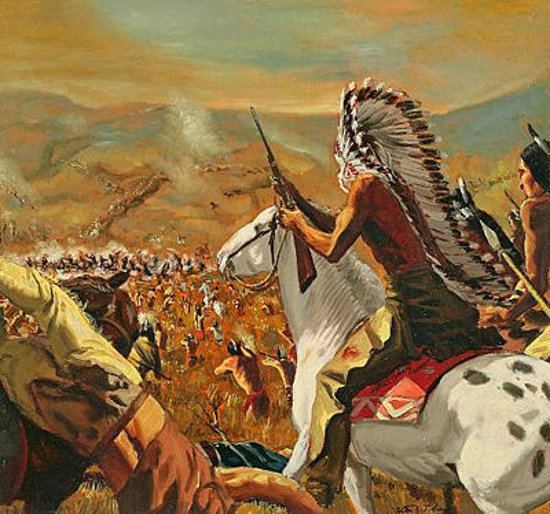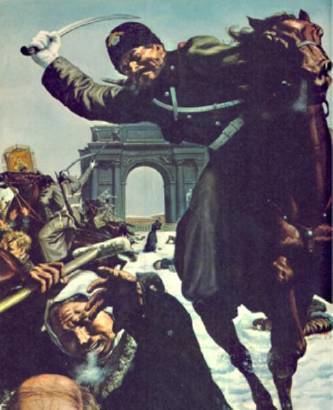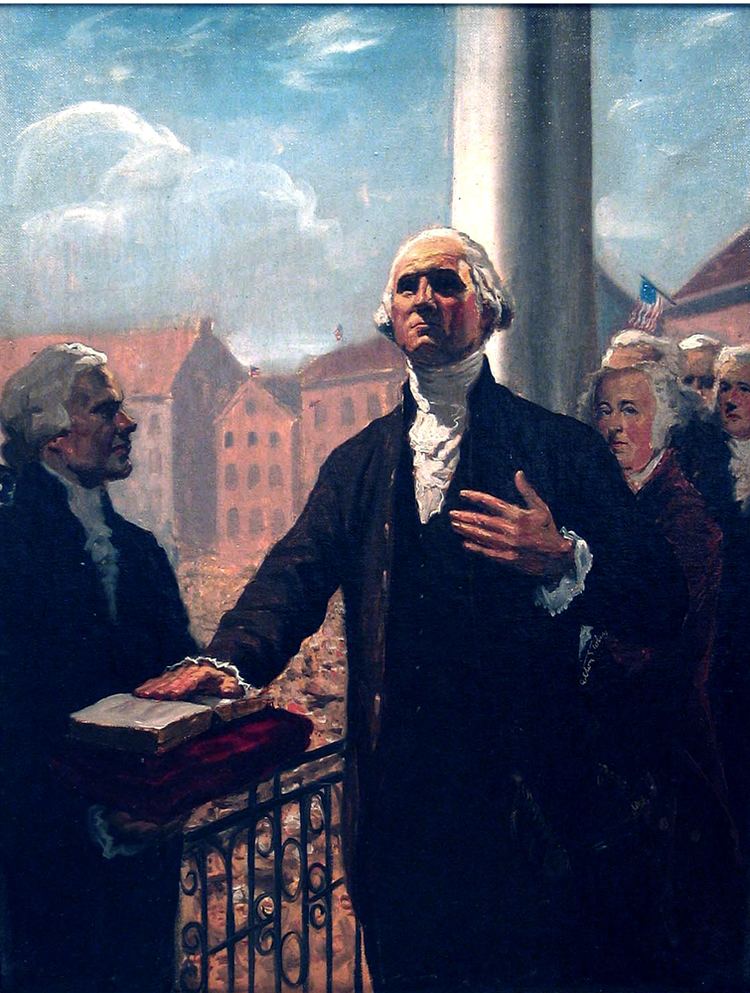Nationality American Period Modern art | Role Artist Name Alton Tobey | |
 | ||
Died January 4, 2005, Mamaroneck, New York, United States | ||
Alton Stanley Tobey (5 November 1914 - 4 January 2005), the American artist, was a painter, historical artist, muralist, portraitist, illustrator, and teacher of art.
Contents

Biography

He was born in Middletown, Connecticut, and in 1934 won a scholarship to the Yale University School of Fine Arts. After his military service, he completed his masters degree at Yale and taught there for a period. Alton Stanley Tobey resided for most of his life in the village of Larchmont, part of the town of Mamaroneck in Westchester County, New York. He was married to Roslyn Tobey, an esteemed piano teacher and musician. Their son, David Tobey, is a painter and musician.

Alton Tobey died on January 4, 2005 at a nursing home in Mamaroneck, New York.

The New York Times obituary, by Wolfgang Saxon, described Alton Tobey as "a muralist, portraitist, and illustrator whose renderings of famous events and faces hang in museums, libraries, public buildings, corporate offices, and private collections." Tobey is ranked by the Artists Trade Union of Russia amongst the world-best artists of the last four centuries".
Style

Referring to the dichotomy between his realist works and his curvilinears and other modernist works, Alton Tobey once said, "I live an artistic double life: one of classical realism and the other of aesthetic exploration." [1]
Realist work

Tobey's murals, illustrations, and portraits show him working in the realistic style for which he is best known.
The huge murals on historical subjects (first painted in the 1930s, when he worked for the WPA Federal Art Project) are probably the most widely seen of Tobey's works, prominently displayed in many public places in the US and elsewhere. These include public institutions in his native Connecticut; the Smithsonian Institution and other venues in Washington, DC; New York's Intrepid Sea-Air-Space Museum; and even an officers club in Saudi Arabia. Indeed, the Larchmont Gazette obituary (see 'External links') states, "Alton Tobey was best known for the murals, which he called 'symphonies of painting'." Alton Tobey was president of the National Society of Mural Painters from 1984 to 1988.
As a realist painter and illustrator, Alton Tobey is also famously the creator of the hundreds of paintings which illustrate the twelve volumes of "The Golden Book History of the United States. Additionally, he did many illustrations for SPORT magazine, Life Magazine and Time-Life books. Millions of children, whether they knew it or not, grew up gazing at Alton Tobey's vivid imaginings of historical events (such as this one depicting a scene from the Russian revolution). Michael Bierut wrote for Design Observer magazine a very touching tribute to Alton Tobey that begins: "Alton Tobey died the week before last. Chances are you've never heard of him, but when I was eight years old, I had no doubt about one thing: Alton Tobey was the best artist in the world." Tobey's works are included in the collection of the National Museum of American Illustration.
In his work as a frequently commissioned portraitist, Tobey had the honor of rendering many prominent sitters in paint. These included Pope John Paul II, the poet Robert Frost, and Albert Einstein. In fact, it was while Einstein was sitting for his Tobey portrait (during the 1940s), that a cordial acquaintance began which yielded an important gem of artistic inspiration: Einstein's remark that there are really no straight lines in nature led to Alton Tobey's invention of his signature "curvilinear" style - one of his experimental genres.
Abstract and experimental work
Besides the realist works, Tobey also created less well known paintings in several very personal idioms.
Among the several experimental styles, perhaps the most original works (that is, immediately recognizable as having been painted by Alton S. Tobey and no one else) are those in an abstract (or semi-abstract) idiom using a curious "visual alphabet" of his own invention. These he called his "curvilinears" ("Sailboats", shown here, is an example). He created some sculptures in this idiom as well. These abstract works, just as much as those in his realistic vein, display a distinctive and exacting draftsmanship.
Also in a modern (or even postmodern) vein are his series of "fragments": bizarre portraits, mostly of famous people, consisting of extreme closeups of only parts of (usually) the head or face, often far off-center. A particularly amusing example is "Thatcher's Thatch", consisting only of the British Prime Minister's famous hairdo jutting up from the bottom of the canvas. There are also grotesque and piercingly angry paintings of social commentary, sometimes verging on protest art, such as "Our Hero", an over-muscled monster with a tiny infant's head, embodying belligerent and stupid militarism. A portrait of Ronald Reagan called "The Making of a President" shows the President's head bizarrely stretched and multiplied across the canvas into a menacing, many-eyed creature, culminating on the far right with a disembodied Reagan smile hovering mid-air, bounded by sphincterish wrinkles which extend creepily into the smoky brown background. It would not appear to express reverence or affection for the Gipper — yet it was painted by the same man who painted this.
